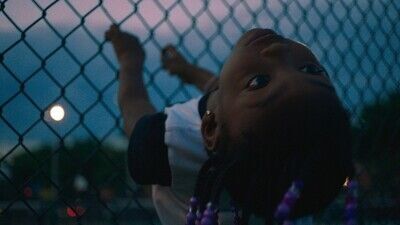To qualify for the program, the fathers have to complete a 10-week program to strengthen their fathering skills, which means sharing some painful experiences, regrets, and fears. One man says it is the first time he has ever been in an environment where men talk about feelings.
As the title indicates, Patton and co-director Natalie Rae make the girls the center of the story, with four as the focus. Aubrey is an adorable five-year-old when we first see her. She is proud of being the smartest in her class, and she has a wall covered with her certificates of achievement. She is especially interested in arithmetic and has already memorized the multiplication tables. As she keeps explaining the meaning of the numbers, we understand that one reason they are so meaningful to her is that she is trying to understand when her father’s seven-year sentence, longer than the time she has been alive, will be over.
The absence of their fathers affects them more traumatically as they get older and understand it is the result of bad choices. Santana, age 10, understands her father’s situation better and, with two younger siblings, says she has had to become the dad in her family. She grimly insists she might get married someday but will never have children. 11-year-old Ja’Ana says sadly, “I don’t even remember his face. I don’t remember nothing about my father.” Raziah, who is 15, is cynical, hurt, and angry, even considering suicide. The most telling example, though, comes from one of the men, who tells the group he first became sexually involved with his daughter’s mother when she was just 13. She gave birth to his daughter at age 14. He recognizes that if her father had been there for her instead of in prison, she would not have been so vulnerable to his attention.
Cinematography by Michael Fernandez and gentle music by Kelsey Lu give the film a warmth and lyricism that reflects the girls’ innocence. Slight slow-motion effects here and there reflect the long days and “long, long thoughts” of the very young. We see moving moments from Patton’s programs to support and encourage Black girls and their mothers to recognize their strength, resilience, and sense of community. Patton knows how much the mothers have contributed and wants them to feel pride and a sense of sisterhood with each other. By making it possible for the girls to bond with their fathers, she is helping the mothers, too. “When our families are intact, our communities rise.”

